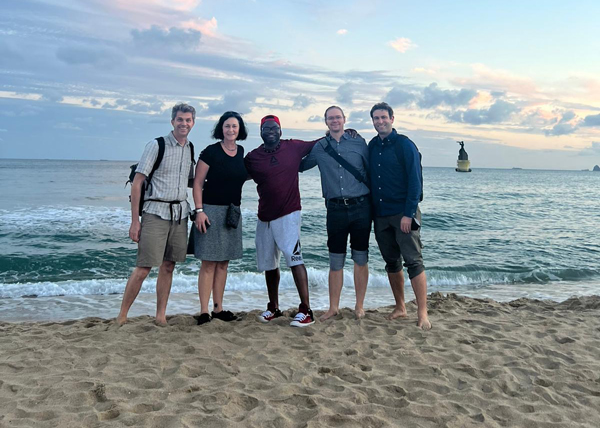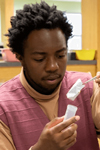Plastic Pollution in Lake Ontario: Input, Fate and Interactions with Human Health
Plastic Pollution in Lake Ontario: Input, Fate and Interactions with Human Health
Project Team
 Steven Day, PhD; Christy Tyler, PhD; Andre Hudson, PhD; Nathan Eddingsaas, PhD; and Matt Hoffman, PhD
Steven Day, PhD; Christy Tyler, PhD; Andre Hudson, PhD; Nathan Eddingsaas, PhD; and Matt Hoffman, PhD
 Maria
Maria
Kazour  Sydney VanWinkle
Sydney VanWinkle  Mira
Mira
Ghosh  Sophie Routenberg
Sophie Routenberg  Alonso
Alonso
Ponce
 Maddox
Maddox
Bush  Jayson Kucharek
Jayson Kucharek  Autumn
Autumn
Potts  Nikki
Nikki
Fuller  Evan
Evan
Batte
Project Description
The overarching goal of Project 1 is to understand what types of plastic pose the greatest risk for ecosystem integrity and human health. This includes assessment of how risk varies spatially and temporally (Where are organisms and people most likely to be exposed? How do seasonal changes and different environmental conditions impact the transformation of plastic? How do these transformations affect risk?). Ultimately, we will produce predictive models to identify hotspots of input, accumulation, and potential exposure for people and aquatic organisms.
Research Questions
- What are the greatest sources of plastic debris? What types of plastic are most common in Lake Ontario?
- Input of plastic through stormwater: hotspots of input will be sampled to develop spatial and temporal relationships.
- Abundance and composition of microplastic in the nearshore region of Lake Ontario will be measured in the water and in sediment.
- What happens to plastic in the environment? Do differences in weather and water chemistry shift potential risk?
- Chemical, mechanical and biological transformations of plastic will be quantified under different temperature and pH regimes in both lab and field settings.
- Where does it go?
- Predictive models of input and fate of MP in the watershed and in Lake Ontario will be developed using spatial and temporal drivers.